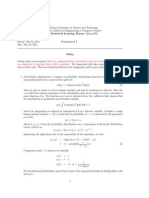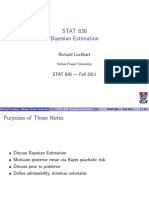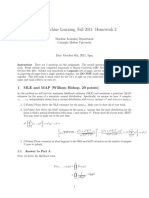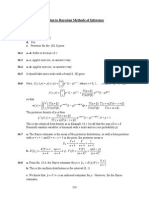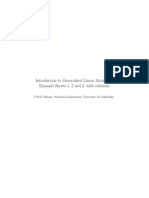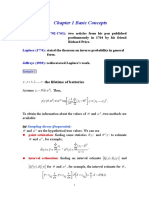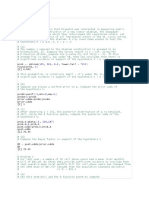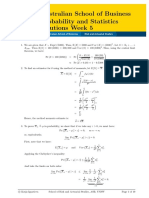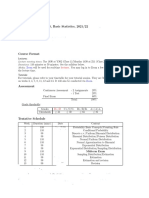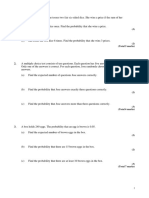0% found this document useful (0 votes)
112 views2 pagesExercise Bayesian
This document provides an exercise on Bayesian statistics involving determining:
(1) The posterior distribution of σ given the data, which is a gamma distribution.
(2) The Bayes estimator of σ under squared loss, which is the posterior mean.
(3) The maximum likelihood estimator (MLE) of σ, which converges in probability to the true value of σ as the sample size increases, implying the Bayes estimator also converges to the true value.
Uploaded by
piergiorgioscaliaCopyright
© © All Rights Reserved
We take content rights seriously. If you suspect this is your content, claim it here.
Available Formats
Download as PDF, TXT or read online on Scribd
0% found this document useful (0 votes)
112 views2 pagesExercise Bayesian
This document provides an exercise on Bayesian statistics involving determining:
(1) The posterior distribution of σ given the data, which is a gamma distribution.
(2) The Bayes estimator of σ under squared loss, which is the posterior mean.
(3) The maximum likelihood estimator (MLE) of σ, which converges in probability to the true value of σ as the sample size increases, implying the Bayes estimator also converges to the true value.
Uploaded by
piergiorgioscaliaCopyright
© © All Rights Reserved
We take content rights seriously. If you suspect this is your content, claim it here.
Available Formats
Download as PDF, TXT or read online on Scribd
/ 2














